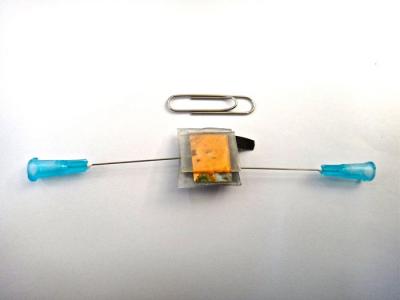Researchers from the US and Saudi Arabia developed a micron-sized microbial fuel cell (MFC) containing multilayer graphene that works using saliva or other waste liquids. Such an MFC (that can produce almost 1µW in power) may find applications in bioelectronics (lab-on-a-chip and point-of-care diagnostics, for example).

Microbial fuel cells (MFCs) rely on bacteria to generate electricity from waste. The bacteria in the device break down organic matter and this process releases electrons that can be collected at an anode. The electrons then travel through an external circuit to the cathode to produce electrical current.
The multialayer graphene foil was used as the anode in this MFC. The cathode is an air cathode. To make the MFC itself, the used a 1x1 cm graphene foil, placed a rubber spacer and then placed the cathode. A square hole (5x5 mm) was cur in the center of the rubber spacer to make it work as the anode chamber.